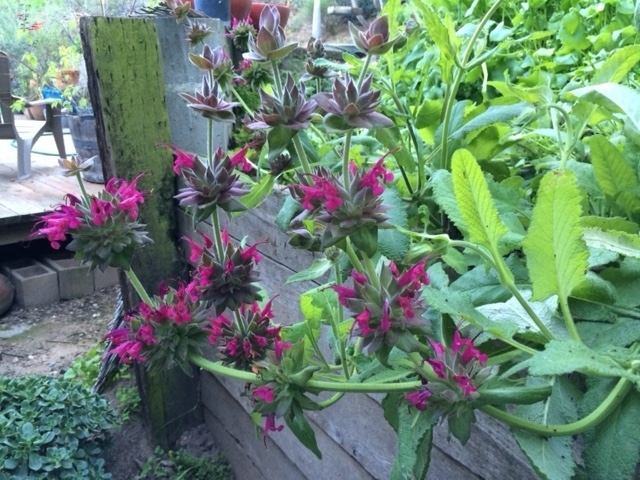
The take-home point of the article is that a small garden can become a home to many species of wildlife and when there are other small gardens nearby, they become part of a larger habitat corridor for wildlife to live and travel through. As many of you may know, habitat fragmentation is one of the many causes for declines in native species. By creating a mosaic of small native habitats, we gardeners are helping to increase habitat continuity for native animals.
Vogt's article has 4 tips:
- Keep it simple but plant it thick. That means fewer species so your garden doesn't look chaotic. He recommends that 2-3 of the 10-12 species in your 100-200 sq ft garden be grasses or sedges, which provide shelter and nesting material for birds and also tend to outcompete weeds.
- Mass flowers. Vogt recommends 4-6 species of flowering perennials planted in clumps of 2-3 plants. To create more interest in the garden, try to choose species with different flowering times so that you have blooms over a greater period of time.
- Bring in architectural plants for winter interest. Some grasses and perennials have interesting seeds and bracts, and small shrubs may even produce berries. If you have room, consider a small tree with spring flowers and fall or winter fruits.
- Create a path. You could use mulch, decomposed granite or stepping stones. The path will create additional interest.
Because I'm interested in promoting the use of native California plants in the garden, I'd like to suggest a few for each of the tips above. In addition to my selections, the UC Davis Arboretum staff has come up with a list of All-Stars -- tough, reliable plants that have been tested, are easy to grow, require little water, have few problems with pests or diseases, and have outstanding qualities in the garden. Many of them are California native plants that support native birds and insects.
- Grasses and sedges. Some to try: California fescue (Festuca californica), purple needlegrass (Nasella pulchra), blue-eyed grass (Sisyrinchium bellum), foothill sedge (Carex tumulicola), coast melic (Melica imperfecta)
- Mass flowers. You can really have some fun with these. Some to consider: red-flowered buckwheat (Eriogonum grande var. rubescens), California buckwheat (Eriogonum fasciculatum, look for a low-growing cultivar), California fucshia (Epilobium canum -- these bloom in late summer to fall!), harvest brodiaea (Brodiaea elegans, a bulb), wild hyacinth (Dichelostemma capitatum, another bulb), hummingbird sage (Salvia spathacea), one of the shrubby monkeyflowers (Mimulus spp.), coyote mint (Monardella villosa), black sage (Salvia mellifera) or any of the other California sages, margarita BOP penstemon (Penstemon sp.) or one of the many penstemons, California buttercup (Ranunculus californicus)
- Architectural plants for winter interest. I'm leaning more toward winter fruit producers. Some plants and small shrubs to ponder: western redbud (Cercis occidentalis), deer grass (Muhlenbergia rigens), California wild rose (Rosa californica), lemonade berry and sugar bush (Rhus integrifolia and R. ovata), currants and gooseberries (Ribes spp.), one of the smaller manzanita species (Arctostaphylos 'Howard McMinn', Arctostaphylos 'Sentinel', Arctostaphylos edmundsii var. parvifolia 'Bert Johnson')
- Create a path. I suggest whatever you use, you use something permeable to let water percolate back into the sediment.
It's not too late to put in California native plants. They may not completely establish the first year and you might have to water occasionally, but if you get them in soon you can take advantage of the end of the El Nino rains. I consulted with several books in coming up with these suggestions and they are great additions to your garden library:
Bornstein, Fross & O'Brien. 2005. California Native Plants for the Garden. Cachuma Press. Los Olivos, California.
Keater & Middlebrook. 2007. Designing California Native Gardens: the Plant Community Approach to Artful, Ecological Gardens. University of California Press. Berkeley, California.
Also worth checking out is the California Native Plant Society website. Both Monterey and Santa Cruz chapters are active and the website has a database of nurseries that sell native plants. The UC Master Gardeners of Monterey Bay's Local Resources page also has some useful links.
What are you waiting for? Time to get gardening!